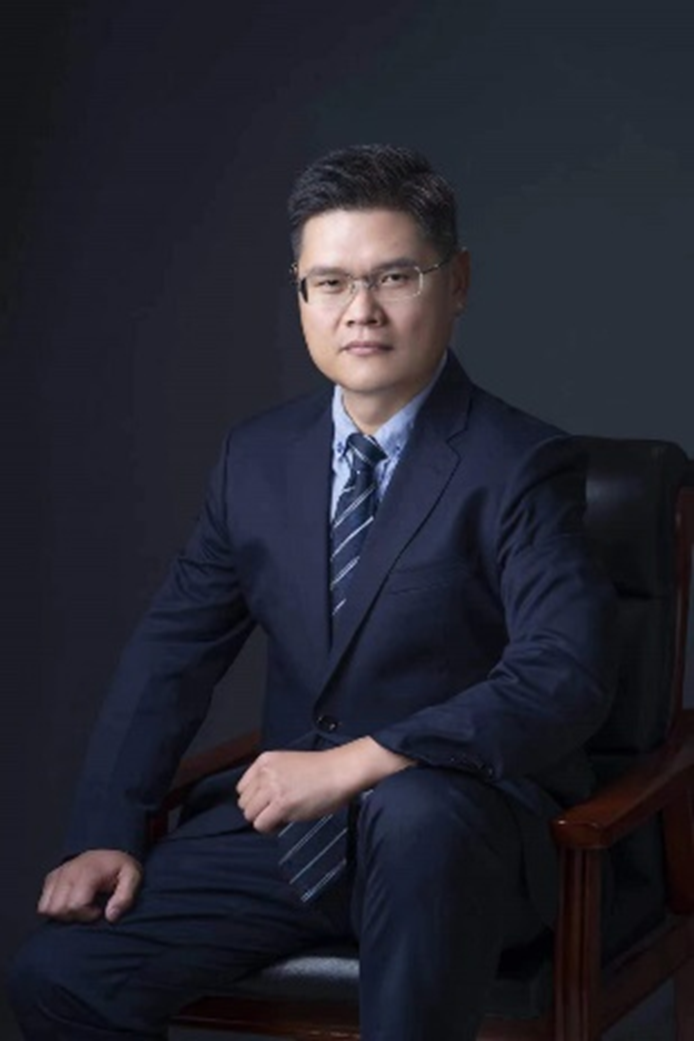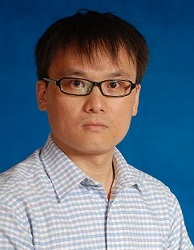
Prof. Gui Gao, Southwest Jiaotong University, China
高 贵 教授,西南交通大学
Professor Gao Gui, a selected talent of the National Talent Program (2018). He has long been engaged in fundamental and applied research in remote sensing information processing and new system radar engineering development. He has achieved a series of theoretical and key technological innovations in synthetic aperture radar (SAR) data interpretation and multi-source remote sensing information fusion, and has independently developed a complete set of equipment. In recent years, he has undertaken more than 40 national key projects.
He serves as an editorial board member of *Journal of Radar*; young editorial board member of *Space Electronic Technology*; young editorial board member of *Acta Electronica Sinica* (English edition); associate editor and guest editor of IEEE JSTARS; associate editor of IEEE JMASS; young editorial board member of *The Innovation* (IF: 34.2); guest editor of IEEE GRSM, JAG, Sensors, IJAP, and Remote Sensing. He is an executive member of the Intelligent Game and Wargaming Specialty Committee of the China Command and Control Society, an executive member of the Information Technology Specialty Committee of the China Ocean and Lakes Society, a member of the Intelligent Command and Control System Engineering Specialty Committee of the China Command and Control Society, a member of the Photogrammetry and Remote Sensing Specialty Committee of the China Society for Geodesy, Photogrammetry and Cartography, a member of the Quantitative Remote Sensing Specialty Committee of the China Remote Sensing Application Association, a member of the Management Committee (composed of 10 members) of the Southwest Mountainous Natural Resources Remote Sensing Monitoring Engineering Technology Innovation Center of the Ministry of Natural Resources, and a member of the 4th Expert Review Committee of Sichuan Province.
He has published 143 papers in prestigious international journals and conferences, including *IEEE GRSM*, *ISPRS Journal of Photogrammetry and Remote Sensing*, and *IEEE TGRS*. Among them, seven papers were selected as ESI Highly Cited Papers and two as Elsevier Hot Papers. He has published five monographs and holds or has applied for more than 40 national invention patents and software copyrights. He has participated in the formulation of two national and industry standards. He was awarded the personal third-class merit once.
He has received over ten awards, including the First Prize of the Innovation Award from China Command and Control Society, the First Prize for Scientific and Technological Progress in Geographic Information from China, the inaugural Youth Science and Technology Award from the Ministry of Natural Resources, the Li Xiaowen Youth Award in Remote Sensing Science, the University GIS Innovation Figure Award, the Second Prize of the Sichuan Provincial Natural Science Award, and the Second Prize for Scientific and Technological Progress of China Aerospace Science and Technology Corporation. For three consecutive years, he has been selected into the Stanford University global top 2% scientists "Lifetime Scientific Impact Ranking."
He has received the University GIS Teaching Achievement Award, the Second Prize of Excellent Textbook from China University Press, the Third Prize of Excellent Paper from Hunan Higher Education Association, Third Prize for Outstanding Teaching Individual at his university, Second Prize for Outstanding Teaching Achievement at his university, Second Prize in the inaugural National College Electronic Science Curriculum Group Teaching Case Competition, guided students to win the Excellent Doctoral Dissertation in University GIS, the First Prize in the National Finals of the 9th China College Student Digital Media Technology and Creativity Contest, the Second Prize in the Fujian Province College Student Microcontroller Application Design Competition, and the Second Prize in the 9th Sichuan Provincial Surveying and Mapping Skills Competition Professional Group.

Prof. Lei Fan, Southwest University, China
樊 磊 教授,西南大学
Fan Lei, Professor and PhD advisor at Southwest University, is a recipient of the National Outstanding Youth Fund and the Chongqing Outstanding Youth Award. He has long been engaged in remote sensing of forest carbon sinks under global change, innovating passive microwave remote sensing technologies for forest carbon stock monitoring, and revealing the response mechanisms between forest carbon sinks and climate change. He led the development of the world’s first annual forest carbon stock product based on low-frequency passive microwave (L-VOD), which supports the IPCC reports and global carbon budget assessments. As first or corresponding author, he has published in top academic journals such as Nature Geoscience, Nature Plants, and Science Advances, and has been awarded the Li Xiaowen Youth Award in Remote Sensing Science.

Prof. Qingfeng Hu, North China University of Water Resources and Electric Power, China
胡青峰 教授,华北水利水电大学
Major in Geodesy and Surveying Engineering, graduated in June 2011 from China University of Mining and Technology (Beijing). Recognized as a young backbone teacher in Henan Province. Currently employed at the Department of Surveying Engineering, School of Surveying and Geographic Information Engineering, North China University of Water Resources and Electric Power, serving as the department chair. Has presided over and completed one National Natural Science Youth Fund project and one subproject of a Key National Natural Science Foundation project; participated in the completion of four National Natural Science Foundation projects and one New Engineering project by the Ministry of Education; also involved in one Ministry of Education demonstration project on ideological and political education in courses, including teaching excellence and team projects. Awarded the First Prize of Henan Province Scientific and Technological Progress (2020, 4th author), First Prize of the Surveying Science and Technology Award by the Chinese Society for Geodesy, Photogrammetry and Cartography (2020, 2nd author), named one of the Top Ten Innovative Figures in Surveying and Mapping Science and Technology in Henan Province (2019), and Third Prize of the Science and Technology Award by the National Coal Industry Association (2019, 2nd author). Published more than 10 papers indexed by SCI or EI journals and authored 2 monographs.

Prof. Jian Cheng, University of Electronic Science and Technology of China, China
程建 教授,电子科技大学
Research Directions: Image processing and pattern recognition, computer vision, intelligent video surveillance and scene understanding, analysis and processing of three-dimensional scene information, and multi-source remote sensing image fusion and information mining.
Research Overview: He has been engaged in systematic research work focusing on image processing, pattern recognition, machine learning, computer vision, and multi-modal remote sensing image analysis. He has undertaken over 20 national and provincial scientific research projects, including subprojects of the National 973 Program, the National 863 Program, the National Natural Science Foundation projects, and scientific collaboration projects with enterprises. He has published more than 100 academic papers in important domestic and international academic journals and conferences, including IEEE Transactions and ISPRS, with over 30 papers indexed by SCI and more than 80 indexed by EI. Additionally, he has applied for over 30 national invention patents, with more than 10 patents authorized.
